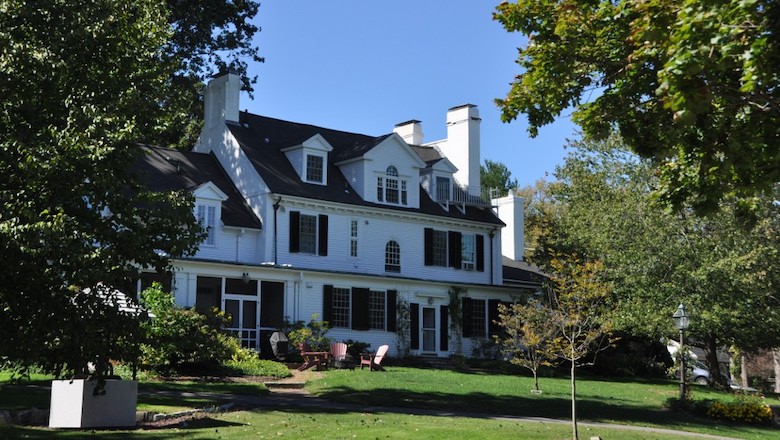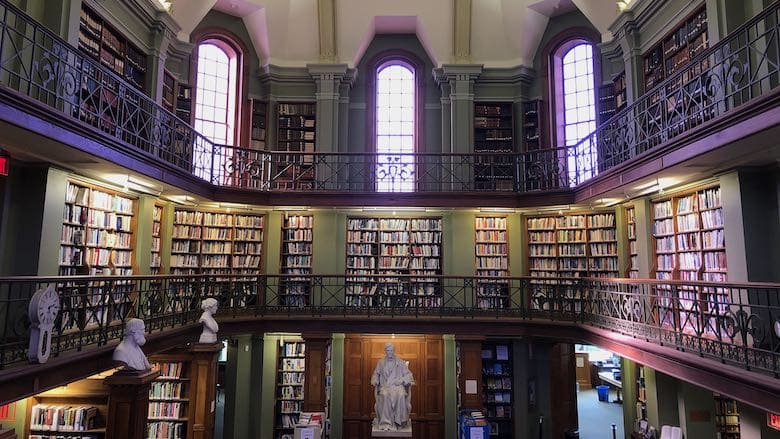GreenerMass helps The Governor’s Academy save energy, reduce emissions, and prepare for a climate-resilient future
Founded in 1763, the oldest continuously operating boarding school in New England continues to undertake steps to keep its campus operating efficiently. Thanks to GreenerMass, the burden of funding first costs for energy-efficiency projects is alleviated.

It’s remarkable to think about an institution that predates the birth of this country.
At the time the first students of The Governor’s Academy were studying religion, Greek, and Latin, the Boston Tea Party was still ten years off. The “shot heard round the world” and Paul Revere’s ride to round up the Minutemen militia against the British invasion was still 12 years in the future. George Washington was 26 years away from serving as President.
Two hundred and fifty-eight years ago, The Governor’s Academy was founded as a preparatory school for boys. It is now an independent, co-educational 9-12 boarding school located in Byfield, a village of the quaint town of Newbury on Boston’s North Shore. It is the oldest continuously operating independent boarding school in New England.
Initially a one-room schoolhouse, The Governor’s Academy campus today stretches across more than 400 acres with 30 buildings, extensive grounds, and athletic fields.
The future of The Governor’s Academy and institutions like it rests on a number of variables—meeting its mission, for example. Financial solvency. Community support. And of course, resilience and continued operations in the face of climate change.
Finding efficiencies
Partnering with GreenerU to take advantage of the GreenerMass program, The Governor’s Academy was found to be eligible for a suite of energy-efficiency measures that more than pay for themselves over seven years. Projects included lighting retrofits in six buildings, kitchen hood controls, and adjustments to aeration of the school’s wastewater treatment plant. Previously, a 25-HP blower motor ran 24/7 to aerate the bioreactor tank, which consumed about 158,000 kWh per year; the installation of a variable frequency drive now reduces speeds when the dissolved oxygen levels are satisfied.
Each of these measures came with additional benefits beyond financial and energy savings. With the wastewater treatment plant, better visibility and control of dissolved oxygen means an improved treatment process, and there is reduced wear and tear on blowers and motors. Lighting upgrades mean improved light levels, quality, uniformity, and controls, reduced maintenance—and in particular, substantially reduced energy load. For example, connected lighting load in the school’s ice rink dropped from 41 kW to 9 kW. And in the kitchen, hood controls resolve long-standing issues with noise and comfort, and there is better temperature and pressurization control.
Overall, benefits to The Governor’s Academy from this GreenerMass suite of projects amount to:
- 615,000 kWh per year electricity reduction
- 5,742 therms per year natural gas reduction
- 385 MTCO2e per year greenhouse gas emissions reduction
- $12,900 / year net savings (year 1-7) (net of program payment; there was no upfront cost for the work)
- $129,000 / year net savings (year 8+)
In context
Like many educational and community institutions, The Governor’s Academy is looking for ways to operate more efficiently and save on utility costs. Those efforts also happen to fit within a climate neutrality framework that GreenerU hopes to help institutions achieve through planning, engineering, and implementation.
Many independent schools are taking steps to address climate change through energy-efficiency measures that happen to have other co-benefits. The Fessenden School in Waltham, Massachusetts, began a long-term process of converting its campus, building by building, from inefficient steam heat to low-temperature hot water. Brooks School in North Andover, Massachusetts, built a new art center with air-source heat pumps, LED lighting, and other features that resulted in 14% lower-than-modeled energy use.
These efforts don’t just save schools money. Every time a more energy-efficient measure is designed or implemented, a school is reducing its impact on the environment. These measures are pieces of a larger puzzle that GreenerU helps institutions navigate: the organizational, operational, and infrastructural changes required to achieve climate neutrality over time.
Thus, regardless of whether an institution is actively pursuing climate neutrality, projects like what The Governor’s Academy has implemented with GreenerU are all helping to chip away at the global problem of climate change in ways that help save money, too—and ensure the longevity of historic schools, hopefully for centuries to come.
Please feel free to contact us with questions about the GreenerMass program or any of your institution’s energy-efficiency needs.



